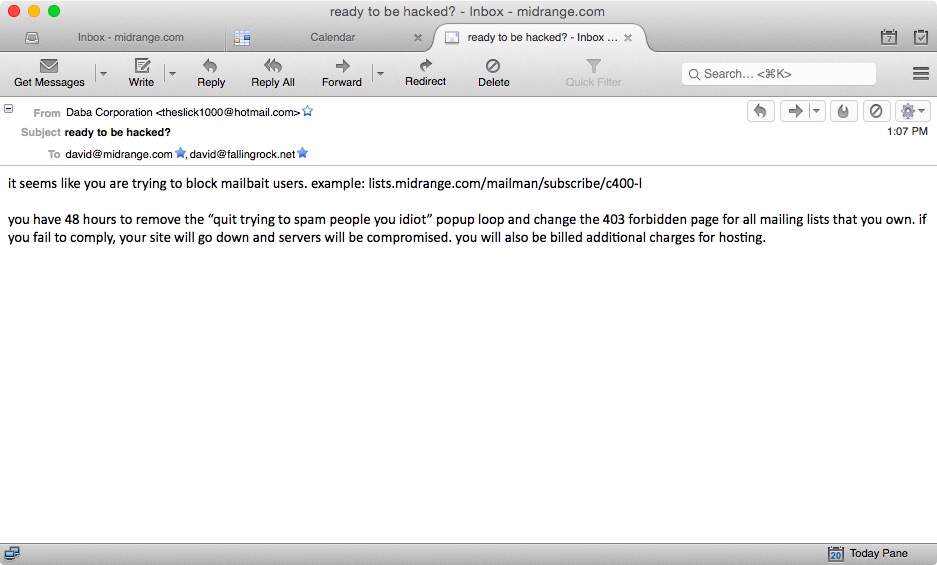This is more of a ‘for future reference’ post than anything else.
Recently my mailing lists have been getting hit with stupid spam (what spam isn’t) that invokes bible related conspiracy spam. The messages reference bible verses multiple times.
To catch the spam, I put in a rule that matches bible references.
It’s a pretty simple rule … it looks for specific bible chapters followed by a number colon number.
body LM_BIBLE_MULTI /\s(matthew|revelation|john|corinthians|thessalonians|luke|romans|ezekiel|mark)\s+\d+:\d+/i describe LM_BIBLE_MULTI Contains bible verses score LM_BIBLE_MULTI 0.5
The thing about the spam I’m trying to catch is that it references the bible verses multiple times. The above rule only catches a single bible verse reference and adds the score.
To increase the score for each individual hit of the rule, you need to add the following to the rule:
tflags LM_BIBLE_MULTI multiple
This way, every time the LM_BIBLE_MULTI rule is hit, the score increases by 0.5. The more bible references in the email, the higher the spam score.
The multiple modifier for tflags is available in SpamAssassin 3.2 & higher.

